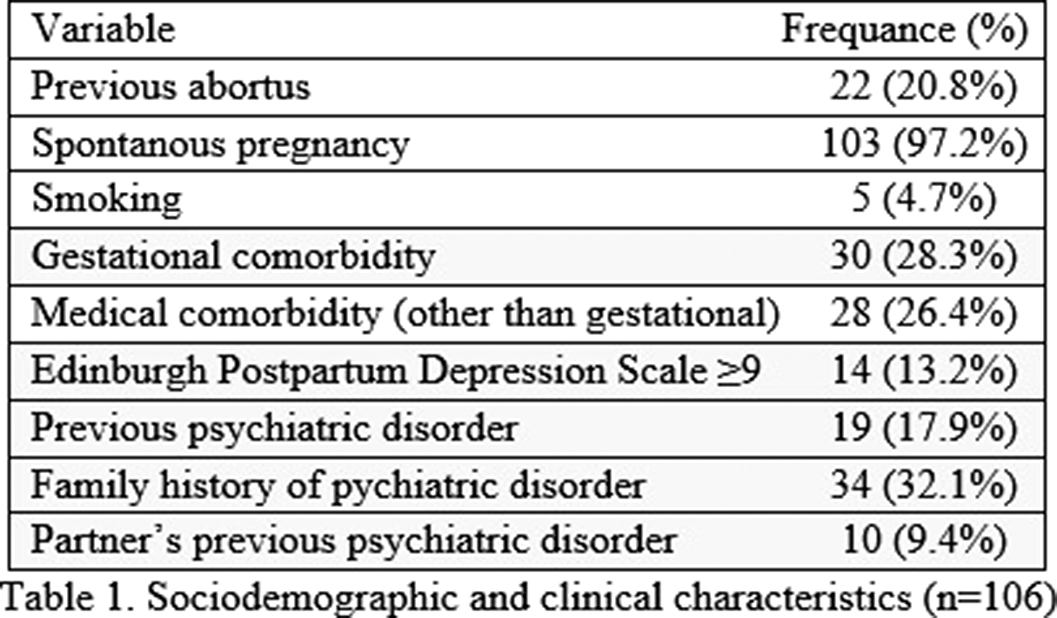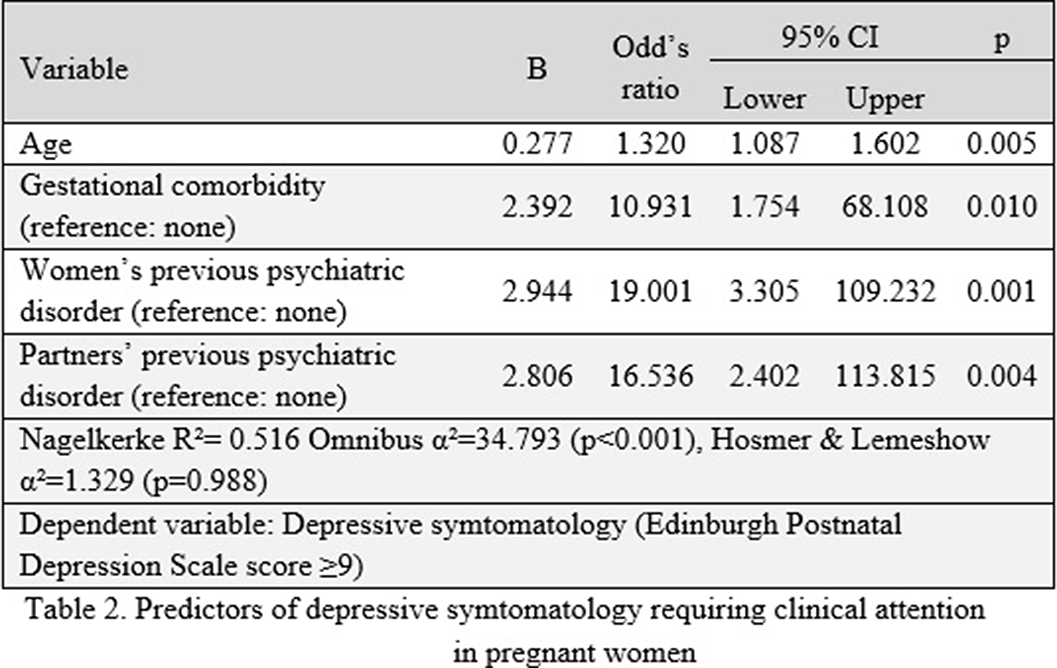41 results
Suicidality and self-injury behaviours due to the use of Novel Psychoactive Substances (NPS)
-
- Journal:
- European Psychiatry / Volume 66 / Issue S1 / March 2023
- Published online by Cambridge University Press:
- 19 July 2023, p. S44
-
- Article
-
- You have access
- Open access
- Export citation
Are we ready to be techno-digitalicus psychiatrists?
-
- Journal:
- European Psychiatry / Volume 66 / Issue S1 / March 2023
- Published online by Cambridge University Press:
- 19 July 2023, p. S53
-
- Article
-
- You have access
- Open access
- Export citation
Boredom, emotional dysregulation and avoidance coping strategies: Which is their role in youth mood disorders?
-
- Journal:
- European Psychiatry / Volume 66 / Issue S1 / March 2023
- Published online by Cambridge University Press:
- 19 July 2023, pp. S716-S717
-
- Article
-
- You have access
- Open access
- Export citation
Digital Trauma Load: from Online Videogaming to the new forms of digital social networking
-
- Journal:
- European Psychiatry / Volume 66 / Issue S1 / March 2023
- Published online by Cambridge University Press:
- 19 July 2023, p. S38
-
- Article
-
- You have access
- Open access
- Export citation
Psychopathological characterization of modern-type depression in subjects with Internet Gaming Disorder
-
- Journal:
- European Psychiatry / Volume 66 / Issue S1 / March 2023
- Published online by Cambridge University Press:
- 19 July 2023, p. S1001
-
- Article
-
- You have access
- Open access
- Export citation
Eveningness chronotype and depressive affective temperament associated with higher high-sensitivity C-Reactive Protein in Unipolar and Bipolar Depression
-
- Journal:
- European Psychiatry / Volume 66 / Issue S1 / March 2023
- Published online by Cambridge University Press:
- 19 July 2023, p. S247
-
- Article
-
- You have access
- Open access
- Export citation
Towards Social Media as DTx in Psychiatry? Current opportunities and pitfalls
-
- Journal:
- European Psychiatry / Volume 66 / Issue S1 / March 2023
- Published online by Cambridge University Press:
- 19 July 2023, p. S52
-
- Article
-
- You have access
- Open access
- Export citation
Expectant Fathers’ Mental Health History Predicts Actual Depressive Symptomatology in Pregnant Women
-
- Journal:
- European Psychiatry / Volume 66 / Issue S1 / March 2023
- Published online by Cambridge University Press:
- 19 July 2023, p. S653
-
- Article
-
- You have access
- Open access
- Export citation
The mediating role of the boredom and loneliness dimensions in the development of Problematic Internet Use
-
- Journal:
- European Psychiatry / Volume 66 / Issue S1 / March 2023
- Published online by Cambridge University Press:
- 19 July 2023, pp. S623-S624
-
- Article
-
- You have access
- Open access
- Export citation
Whis is the opinion of Italian psychiatrists regarding Telepsychiatry?
-
- Journal:
- European Psychiatry / Volume 65 / Issue S1 / June 2022
- Published online by Cambridge University Press:
- 01 September 2022, pp. S167-S168
-
- Article
-
- You have access
- Open access
- Export citation
Aripiprazole lai two-injection start in a 16 year-old with Schizophrenia
-
- Journal:
- European Psychiatry / Volume 65 / Issue S1 / June 2022
- Published online by Cambridge University Press:
- 01 September 2022, p. S796
-
- Article
-
- You have access
- Open access
- Export citation
Clozapine-Treatment-Resistant Schizophrenia Successfully Managed with Brexpiprazole Combination Therapy: Two Case Reports
-
- Journal:
- European Psychiatry / Volume 65 / Issue S1 / June 2022
- Published online by Cambridge University Press:
- 01 September 2022, pp. S355-S356
-
- Article
-
- You have access
- Open access
- Export citation
The impact of the Covid-19 pandemic on peripartum affective psychopathology
-
- Journal:
- European Psychiatry / Volume 65 / Issue S1 / June 2022
- Published online by Cambridge University Press:
- 01 September 2022, pp. S103-S104
-
- Article
-
- You have access
- Open access
- Export citation
Long-acting Paliperidone Palmitate treatment in an Ekbom’s Syndrome secondary to Lewy Body Dementia: A case report
-
- Journal:
- European Psychiatry / Volume 65 / Issue S1 / June 2022
- Published online by Cambridge University Press:
- 01 September 2022, p. S477
-
- Article
-
- You have access
- Open access
- Export citation
An observational naturalistic study on non-suicidal self-harm behaviours in a cohort of adolescents and young inpatients during COVID-19 outbreak
-
- Journal:
- European Psychiatry / Volume 65 / Issue S1 / June 2022
- Published online by Cambridge University Press:
- 01 September 2022, p. S255
-
- Article
-
- You have access
- Open access
- Export citation
Depressive symptoms in the peripartum: incidence and associated characteristics
-
- Journal:
- European Psychiatry / Volume 65 / Issue S1 / June 2022
- Published online by Cambridge University Press:
- 01 September 2022, pp. S104-S105
-
- Article
-
- You have access
- Open access
- Export citation
Pathoplastic effects of metabolic disorders in severe mental illness
-
- Journal:
- European Psychiatry / Volume 65 / Issue S1 / June 2022
- Published online by Cambridge University Press:
- 01 September 2022, p. S290
-
- Article
-
- You have access
- Open access
- Export citation
Augmentation strategy fluoxetine and lurasidone in the treatment of OCD with comorbid Restrictive Anorexia: a case report
-
- Journal:
- European Psychiatry / Volume 65 / Issue S1 / June 2022
- Published online by Cambridge University Press:
- 01 September 2022, p. S646
-
- Article
-
- You have access
- Open access
- Export citation
Paternal postpartum depression in an obsessive personality following the COVID-19 lockdown successfully treated with Vortioxetine
-
- Journal:
- European Psychiatry / Volume 65 / Issue S1 / June 2022
- Published online by Cambridge University Press:
- 01 September 2022, p. S507
-
- Article
-
- You have access
- Open access
- Export citation
Boredom, loneliness and modern type depression in a cohort of Italian university students
-
- Journal:
- European Psychiatry / Volume 65 / Issue S1 / June 2022
- Published online by Cambridge University Press:
- 01 September 2022, p. S866
-
- Article
-
- You have access
- Open access
- Export citation





